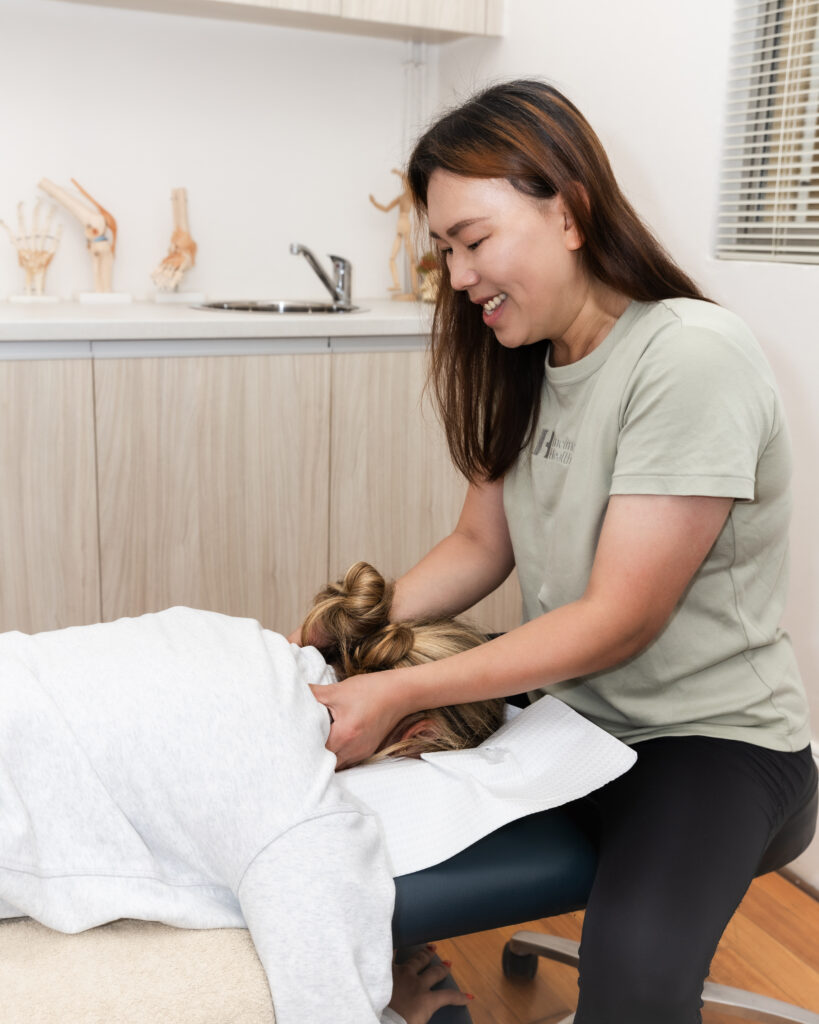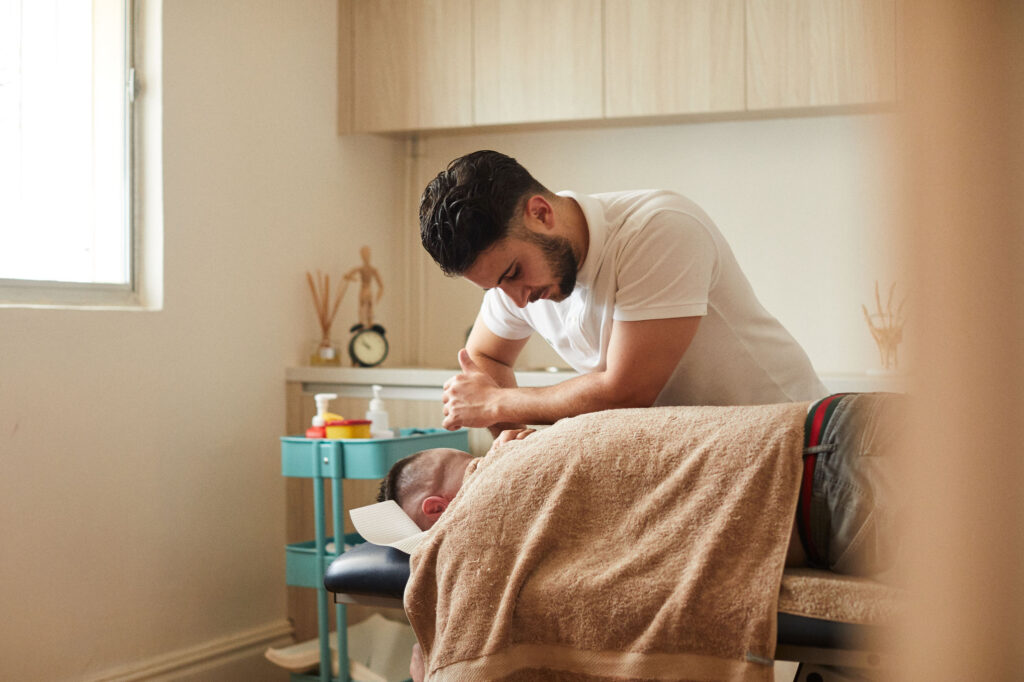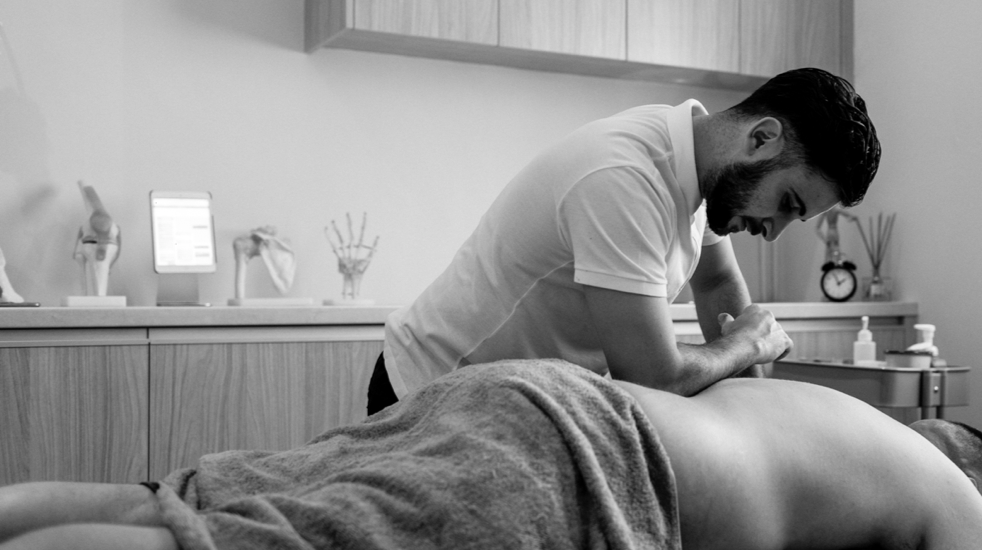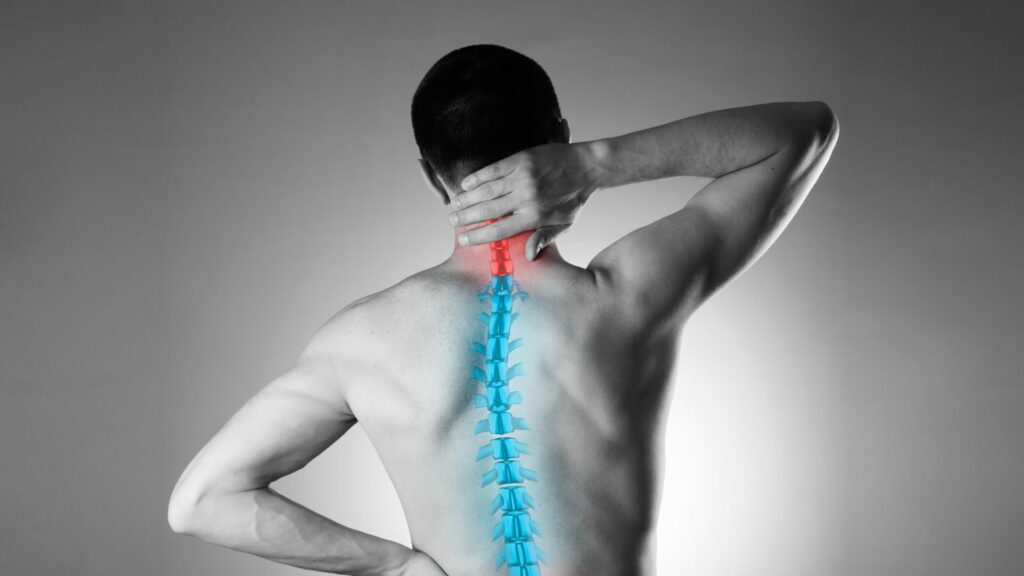Should You See a Chiropractor for Muscle Knots?


Muscle knots can feel like a relentless ache, a sharp pinch, or even cause deep muscle pain and stiffness that never quite goes away. These tight bands of muscle are surprisingly common and can significantly impact your quality of life—leading to discomfort during work, exercise, or even while you’re trying to relax or sleep. It’s no wonder so many people seek fast, effective relief.
If you’re battling persistent muscle tension, chiropractic treatments might offer effective pain relief, a solution you haven’t yet considered. But is chiropractic care the right choice for you? Let’s dive deeper and explore how it can help.
What Are Muscle Knots?
Muscle knots, clinically referred to as myofascial trigger points, are localised areas where muscle fibres remain contracted even when they should be relaxed. These tight spots can feel like small, hard lumps under the skin and often cause both localised tenderness, muscle spasms, and radiating pain into surrounding areas. They can interfere with joint mobility, restricted movement muscle function, and even the health of the surrounding connective tissues, affecting your overall musculoskeletal system.


Common Symptoms:
- Stiffness and tightness in muscles
- Localised pain or tenderness when touched
- Reduced range of motion or flexibility
- Pain that radiates to other areas, such as nearby joints or muscles
- Muscle weakness or fatigue
Common Causes:
- Stress and anxiety: Emotional tension often translates into physical tension, causing muscles to stay contracted.
- Poor posture: Prolonged sitting, especially with poor ergonomics, is a major culprit for muscle knots, particularly in the neck, shoulders, and lower back.
- Repetitive strain: Activities like typing, heavy lifting, or repetitive sports motions can lead to overuse injuries.
- Dehydration and lack of proper nutrition: Muscles need water and essential minerals (like potassium and magnesium) to function correctly.
- Inadequate recovery: Skipping cooldowns, stretching, or rest after exercise can increase the risk of knots developing.
When left untreated, these knots can worsen over time, sometimes leading to chronic pain syndromes or compensatory injuries elsewhere in the body.
How Do Chiropractors Treat Muscle Knots?
Chiropractors are healthcare professionals trained to diagnose and treat disorders of the musculoskeletal system, particularly those related to the spine. Through effective spinal manipulation and a variety of complementary techniques, chiropractors aim to relieve muscle tension, restore joint mobility, and improve the body’s overall function.
Chiropractic Adjustments and Alignment
Spinal misalignments (subluxations) can create imbalances that place undue stress on surrounding muscles, causing them to spasm or tighten defensively.
Chiropractic adjustments help to:
- Reduce nerve irritation: Proper spinal alignment allows nerves to transmit signals efficiently without interference.
- Improve blood flow: Better circulation supports healing and reduces muscle fatigue.
- Decrease muscle tension naturally: When the spine and joints are correctly aligned, muscles no longer need to overcompensate.
- Provide immediate relief from muscular tension following a chiropractic adjustment.
Trigger Point Therapy
Chiropractors often use trigger point therapy—applying direct, sustained pressure to the knot—to “release” the stuck muscle fibers. This technique:
- Relieves localised pain
- Restores normal muscle function
- Breaks the pain-tension cycle
- Encourages blood flow and nutrient delivery to the affected area
Trigger point therapy is particularly effective when combined with chiropractic adjustments to address structural issues contributing to the knots.
Soft Tissue Manipulation
Many chiropractors are trained in soft tissue therapies such as:
- Active Release Technique (ART): Manually breaking down scar tissue and adhesions.
- Myofascial release: Stretching and softening the fascia (connective tissue) to reduce tension.
These techniques help:
- Break down scar tissue
- Improve muscle elasticity
- Restore normal movement patterns
The Benefits of Spinal Alignment and Physical Therapy on Muscular Tension
When your spine is properly aligned, your overall health improves, and muscles can work more efficiently, leading to:
- Less muscular fatigue: Muscles no longer need to overwork to maintain posture.
- Fewer tension headaches: Especially those stemming from neck and upper back tightness.
- Improved overall mobility and posture: Allowing for smoother, pain-free movement during daily activities.
Chiropractic Care vs Massage Therapy: Which Is Better for Knots?
Massage Therapists:
- Specialise in manual techniques that relax muscles, improve blood flow, and promote stress relief.
- Target the soft tissues exclusively without adjusting bones or joints.
Chiropractors:
- Focus on the interplay between the spine, joints, nervous system, and muscular health.
- Address both symptoms (muscle knots) and root causes (spinal misalignments, postural problems).
- Ideal for individuals experiencing chronic knots, nerve-related symptoms (tingling, numbness), or mobility issues.
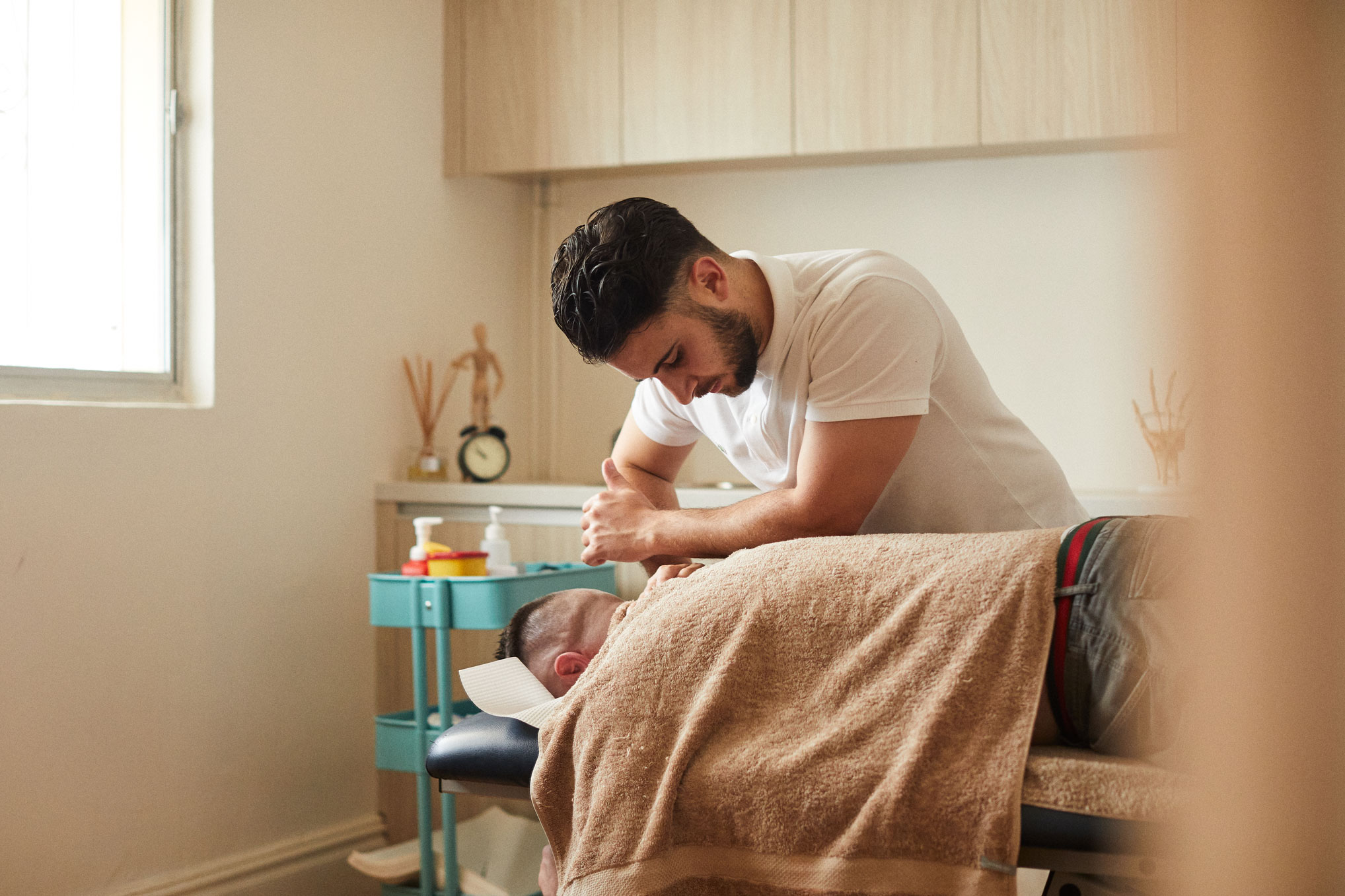

Choose massage therapy for general relaxation, muscle soreness, or if you simply want to unwind. Choose chiropractic care if you notice chronic knots, postural imbalances, shooting pains, restricted mobility, or if your symptoms return frequently after massages.
Persistent or severe muscle knots are often a sign of an underlying issue that simple stretching or massages won’t resolve.
Chiropractic care and intervention is recommended if you experience serious complications, such as :
- Chronic or recurring muscle pain that doesn’t improve with home care
- Tension headaches or migraines associated with neck or upper back tightness
- Limited range of motion (difficulty turning your head, lifting your arms, etc.)
- Pain that radiates into the shoulders, arms, back, or hips
If a muscle knot lasts longer than a week or worsens over time despite stretching or massage, it’s time to seek a chiropractic assessment. Early intervention can prevent the knot from developing into a chronic pain condition or leading to compensatory injuries elsewhere, offering temporary relief.
What to Expect at Your First Chiropractic Visit
- A thorough consultation and physical examination
- Postural and spinal alignment assessment
- Diagnostic tests (if needed) to rule out underlying conditions
- A customised treatment plan tailored to your needs
- Hands-on therapies such as adjustments, trigger point release, and soft tissue work
As part of chiropractic care; your chiropractor may also recommend exercises, stretches, or ergonomic modifications to support your recovery.
Other Prevention Tips
Stretching
Incorporate dynamic stretching before exercise and static stretching afterward to maintain muscle elasticity and prevent tension buildup.
Hydration
Dehydrated muscles are more prone to stiffness, myofascial pain and cramping. Aim for at least 2 litres of water daily, and ensure you’re replenishing electrolytes if you’re active.
Posture Correction
Practice good posture throughout the day. Simple reminders like keeping your shoulders relaxed, using lumbar support, and adjusting your monitor height can make a big difference in managing muscle pain, joint pain and neck pain.
Ergonomics
Set up your workspace to support a neutral spine position. Invest in a quality chair, use a standing desk if possible, and take frequent movement breaks.
Heat/Cold Therapy
Use heat packs to relax muscles and encourage blood flow. Apply cold packs if there’s inflammation, swelling, or sharp pain.
Frequently Asked Questions
Can chiropractic make muscle knots worse?
Rarely. Most people experience significant relief. Some mild soreness may occur after treatment and chiropractic adjustments as the body adjusts to improved alignment.
How many sessions do I need?
The number of sessions depends on factors like the severity of the muscle knots, underlying spinal health, and lifestyle factors. Some find relief after 2–3 sessions; others with chronic issues may need ongoing maintenance.
Will I feel sore after treatment?
It’s common to feel mild, temporary soreness, similar to post-exercise soreness. This typically resolves within 24–48 hours after chiropractic adjustments.
Can a chiropractor help with muscle knots?
Yes! Chiropractors address muscular tightness and the skeletal misalignments that often cause or worsen muscle knots, particularly in chronic conditions promoting lasting relief after chiropractic adjustments.
What doctor should I see for muscle knots?
A chiropractor is an excellent first choice for musculoskeletal-related knots. However, if you experience unusual symptoms like swelling, fever, or weakness, consult a medical doctor.
Can you actually release muscle knots?
Yes. Manual therapy, chiropractic techniques, chiropractic adjustments, physical activity stretching, hydration, and ergonomic changes can effectively release tight muscles and prevent muscle knots.
How do you break up a hard muscle knot?
By applying targeted pressure (trigger point therapy), using a foam roller receiving spinal adjustments and chiropractic adjustments, maintaining hydration, performing stretching exercises, and addressing postural imbalances.



